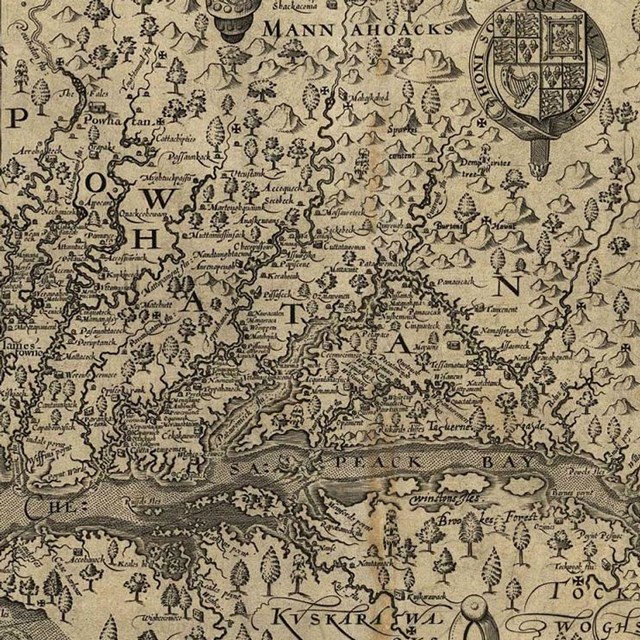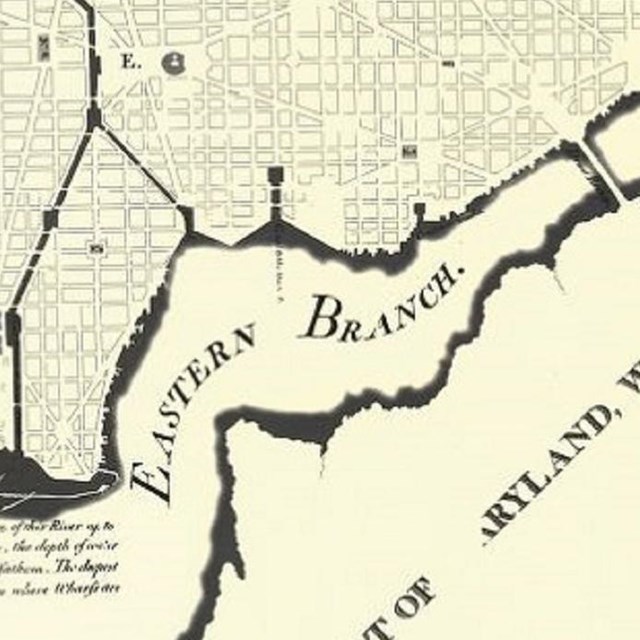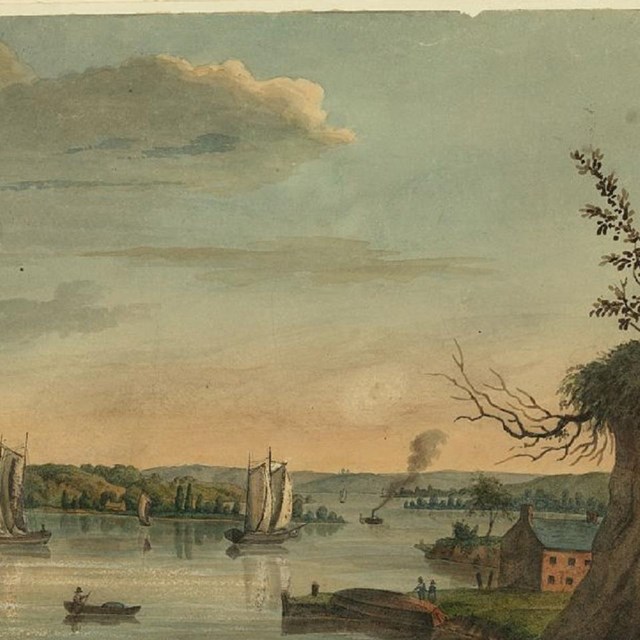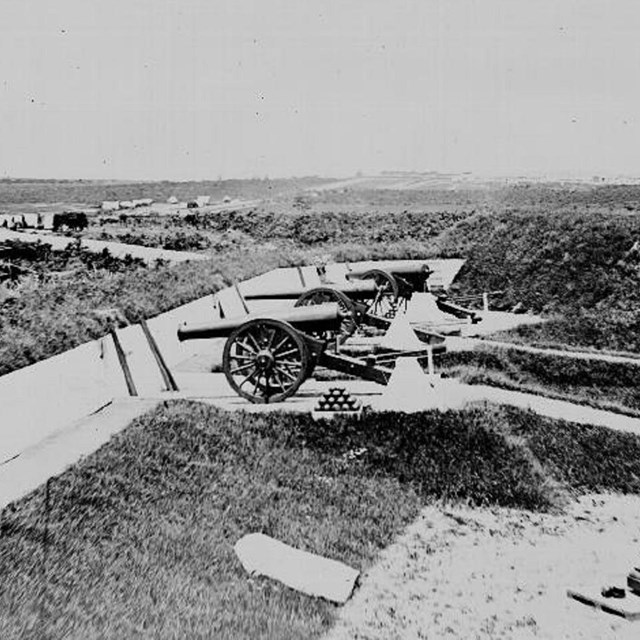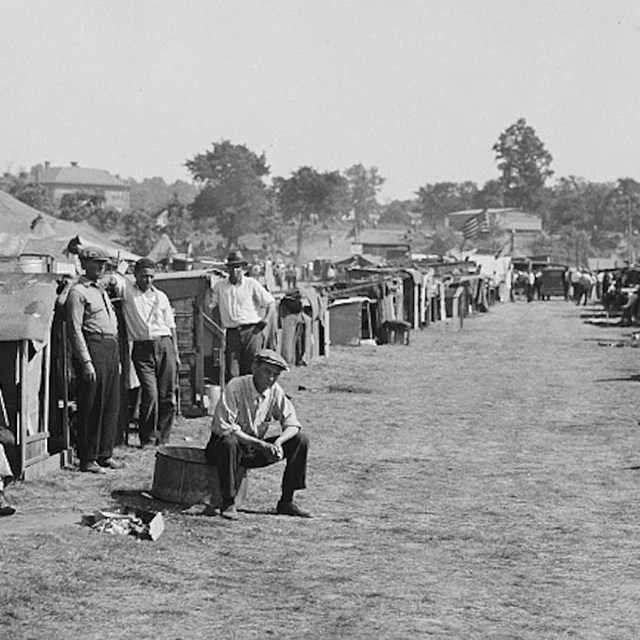Moments in Anacostia History
Over 100 Years of History: Anacostia Park TimelineNumerous events have made Anacostia Park the place it is today. Did you know that when you walk on this ground you are walking where Native Americans hunted? Early European explorers wondered? And where civil rights were gained? Learn individual stories by clicking on the icons below, or scroll down to view the complete timeline of Anacostia Park. 1000-1600's: The NacotchtanksLong before the arrival of the first European explorers, a vibrant American Indian culture evolved around the abundance of fish, game, and other natural resources in the Anacostia River area for at least 10,000 years. In the 17th century, the Nacotchtank Indians were the primary residents along the eastern shore of the Anacostia. Prosperous farmers, gatherers, hunters, and traders, the Nacotchtanks lived in the vicinity of what is now Bolling Air Force Base. 1608: European DiscoveryEnglishman John Smith explored the Anacostia, or Eastern Branch of the Potomac, in 1608. Smith’s arrival heralded both the rapid settlement of the land east of the Anacostia River by English landowners and the rapid decline of the Nacotchtanks. The legacy of the first human inhabitants of the area lives on to this day through the name “Anacostia” which is a latinization of the Algonquian name "Nacotchtank." 1790: Planning for the National Capital CityIn 1790, President George Washington selected the 10-square-mile area around the confluence of the Potomac and Anacostia Rivers as the seat of the new federal government. The site appealed to him because Georgetown in Maryland and Alexandria in Virginia, both established in the 1750’s, already were thriving port cities along the Potomac River. The Anacostia River offered the potential for deep-water ports and was poised for significant harbor development. Washington commissioned Frenchman Pierre L’Enfant to develop plans for the new capital. L’Enfant’s concept for the city was based upon classic European plans, which provided for public buildings to be located on prominent geographical features, grand boulevards that radiated outward and connected public buildings and parks, and large public spaces that served as appropriate settings for the public building. The ambitious architectural and landscape design also included a detailed street plan that extended from the Potomac River to its Eastern branch, as the Anacostia River then was called. Along the Eastern Branch, harbors, markets, and industrial sites were envisioned. 1812: War of 1812Established by the federal government in 1799, the Washington Navy Yard was a major shipbuilding and shipfitting facility on the Anacostia River. On August 24, 1814, British troops marched into Washington, D.C., and set fire to the city's public buildings. Fearing that the British would capture ships, ammunition, and important supplies stored at the Navy Yard, U.S. Commodore Thomas Tingey ordered American forces to burn it down. The Navy Yard was rebuilt after the war. Visible from Anacostia Park, it continues to operate today as a U.S. Navy facility. 1861: Civil War FortificationsWhen fighting broke out between Union and Confederate forces in April 1861, the capital city was vulnerable to attack from pro-Southern sympathizers in Maryland and from other points. A ring of forts was developed around the capital city and included an extensive system of earthen forts that stretched into what is today the District of Columbia, Virginia, and Maryland. The forts established to guard the eastern approaches to the city, Fort Greble (current day Anacostia), Fort Carroll, and Fort Mahan (located just north of Benning Road), were three of the larger rudimentary earthen outposts located east of the Anacostia River. 1932: The Bonus ArmyReeling from the effects of the Great Depression, a large group of World War I veterans marched to Washington, DC, in the spring of 1932 to demand the immediate payment of a wartime bonus. Nearly 11,000 marchers established a camp at the Anacostia Flats (present-day Anacostia Park), where they created shanties from cardboard boxes and scraps of wood. After Congress refused to meet the Bonus Marchers' demands, President Herbert Hoover ordered General Douglas MacArthur to remove them by force. Police and military personnel, including a tank unit led by Major Dwight D. Eisenhower, attacked the marchers on July 28, 1932, knocking down and setting fire to their shelters. Those not injured in the battle drifted back to their homes without the sought-after bonus. Read more on Bonus Expeditionary Forces March on Washington. 1900’s: Development of Anacostia ParkThe appointment of the McMillan Commission by the U.S. Congress in 1901 set the stage for the development of Anacostia Park. Among its recommendations, the Commission urged that the Anacostia ‘flats’ follow the model of the East and West Potomac Parks – that the swamps be ‘reclaimed’ and the new lands used as gardens and recreation space for public use. The reclamation of the silted Anacostia River and its transformation into a public park was an ambitious plan that would take several decades to complete. The Anacostia River and Flats Act in 1914 called for ‘continuing the reclamation and development of the Anacostia River’ and tidal plains. To accomplish this task, the U.S. Army Corps of Engineers constructed a seawall on the banks of the Anacostia, dredging the river bottom, and used the sediment to fill in the wetlands behind the wall. Park construction and landscaping projects continued throughout the 1920’s and 1930’s, surviving a series of cost overruns, work stoppages, and setbacks. This "reclamation" destroyed a natural wetland system. However, at the time the value of wetlands was not understood and they were generally thought of as "malaria swamps." In 1933, management and oversight responsibilities for Anacostia Park were turned over to the National Park Service. |
Last updated: August 21, 2024










